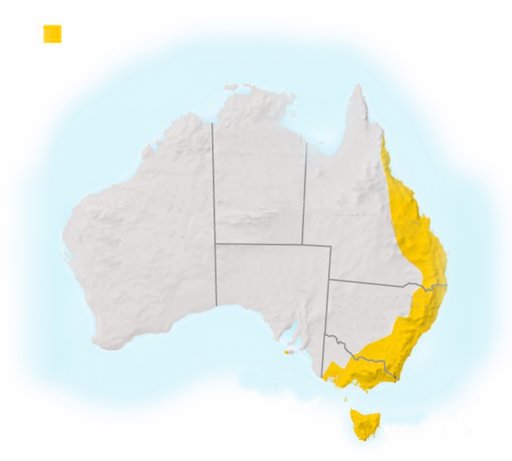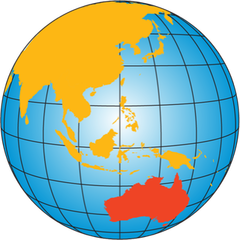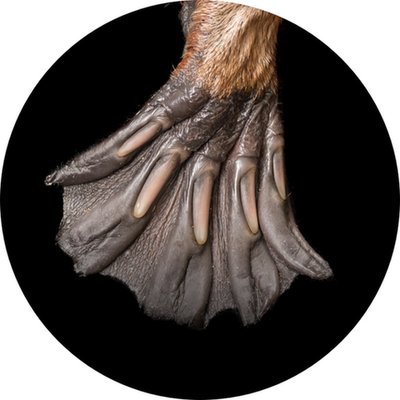Theplatypus’sskeletonissimilarto a lizard’s.
AllintheFamily
FoundonlyinAustralia,platypusesareapartofagroupofegg-layingmammalscalledmonotremes.
Millionsofyearsago,therewerequiteafewspeciesofreptile-likemammals.Theyhadcharacteristicsoftoday’sreptiles,birds,and mammals.
Theyhadfurandnursedtheirbabieslikemammals.Theirfaceshadbirdbeaks.Theirskeletonshadtheshapeandstanceoflizards,andlikelizardsandbirds,theylaideggs.Hundredsofmillionsofyearsago,theseanimalspeciesbegantodivideintothreegroups:mammals,birds,
and reptiles.
Overtime,mostegg-layingmammalsdiedoff.Today,thereareonlytwoegg-layingmammalsleftintheworld:theplatypusandtheechidna.Theechidna,adistantcousinoftheanteater,isfoundinAustraliaandNew Guinea.
DuckFace
Thefirstthingyounoticeabouttheplatypusisthatithasthefaceofaduck.Yet,itsbillisunlikeanybirdbeakoutthere.Itisflexibleandspongyandcoveredwithsmooth,suede-likeskin.Packedwiththreekindsofnervecellsto sensepressure,movement,andelectricity,thisbillisasupersensoryorganthathelpstheplatypusfeelitswayaroundthemurkyunderwater world.
Thebillhastensofthousandsofsensoryreceptorsknownaspushrodsthatareactivatedbypressureortouch.Theyaresosensitivethattheycandetecttheslightestmovementsinthewater,suchaswheninsectlarvaeorshrimpsmovefrom
20centimeters(7.8inches) away.


Platypusesarefoundonlyin Australia.
Asia
Australia
Australia
WesternAustralia
Norternterritory
southAustralia
newsouth wales
victoria
tasmania
Queensland
platypus range
Inadditiontothepushrods,theplatypusbillisheavilyspeckledwithtwomoretypesofnervereceptors.Theyarefine-tunedtodetecttinyelectricalsignalsproducedbythemusclesinthebodiesoftheirprey.So,eveniflarvaeorshrimpsarehiding,theydon’tstandachance.Aplatypuscanfind them.
Thesensitivebillontheplatypuslookslikeaduck’s bill.
ToothlessWork-Around
Aplatypushasnoteeth,butthatdoesn’tstopitfromcrunchingupitsfood.Itscoopsupamealwithamouthfulofriver-bottomgravel.Itswimstothesurfacetogrinditalltogether.Thepebbleshelpcrushthefoodintoatastymash.Itswallowsthefoodandspitsoutthe stones.
Stomachsareacidicpouchesinthegutthathelpanimalsdigesttheirfood.Weirdly,platypusesdonothaveafunctioningstomach.Theyaren’ttheonlyoneswithoutastomach.Aboutaquarterofallfishhaveathroatthatconnectsdirectlytotheir intestines.

Webbedtoeshelpformapaddleforpropellingtheplatypusthroughthe water.
WaterproofandWarm
Beingwaterproofandwarmisnecessaryfortheplatypus’ssurvival.Everyday—evenincoldwinter—theplatypusgoesdivingforfood.Thecoldwatermightsoakthroughananimal’sfurandtakeawaytheirbodyheat.Butnotfortheplatypus.Ithasahandyhairyadaptation.Itiscoveredhead-to-toeinthick,two-layeredfurthatkeepsheatinandwater out.
Finehairsarejam-packedtogethertomakeupawoollyundercoat.Ontopofthisdenselayerisasecondlayermadeupoflonger,flatguardhairs.Airistrappedbetweenthelayers.Thistrapsheatnexttotheskin,keepingtheanimalwarmandsurprisinglydry,even underwater.